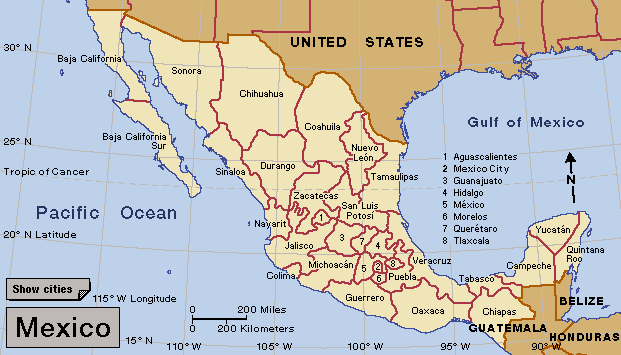Colima << kuh LEE muh >> is a state on Mexico’s western coast. One of Mexico’s smallest states, it has an area of 2,004 square miles (5,191 square kilometers). Inland from the Pacific Ocean, Colima is mountainous, but the land gradually becomes flatter toward the coast. Volcán de Colima (also known as Volcán de Fuego), an active volcano, rises in the northeastern part of the state. At the time of the 2020 census, the population was 731,391, making it the least populated state in Mexico. The capital city is also named Colima.

Port activities and tourism dominate the state economy. The coastal city of Manzanillo has an excellent port. Warm temperatures, beaches, and a relaxed atmosphere attract visitors to Colima. Growing lemons is another notable industry.
Archaeological evidence shows that American Indians lived in the Colima region as early as the 1400’s B.C. Otomí and Nahua Indians lived in the region when the Spanish arrived in the A.D. 1500’s. The Spanish sea captain Gonzalo de Sandoval founded the village of Colima in 1523. Later, the village was moved to the location of the present-day capital. Colima became a Mexican state in 1857.

In December 1908, Mexican President Porfirio Díaz inaugurated the Guadalajara-Colima-Manzanillo railroad. This railroad contributed to Colima’s growth. In 1928, rebels known as Cristeros attacked Manzanillo. The rebels were part of a popular uprising against certain provisions in the Mexican Constitution of 1917 that limited the influence of the Roman Catholic Church. In 1979, Colima’s people elected Mexico’s first female governor, Griselda Alvarez. In January 2003, an earthquake destroyed a large part of the city of Colima’s historic center.
